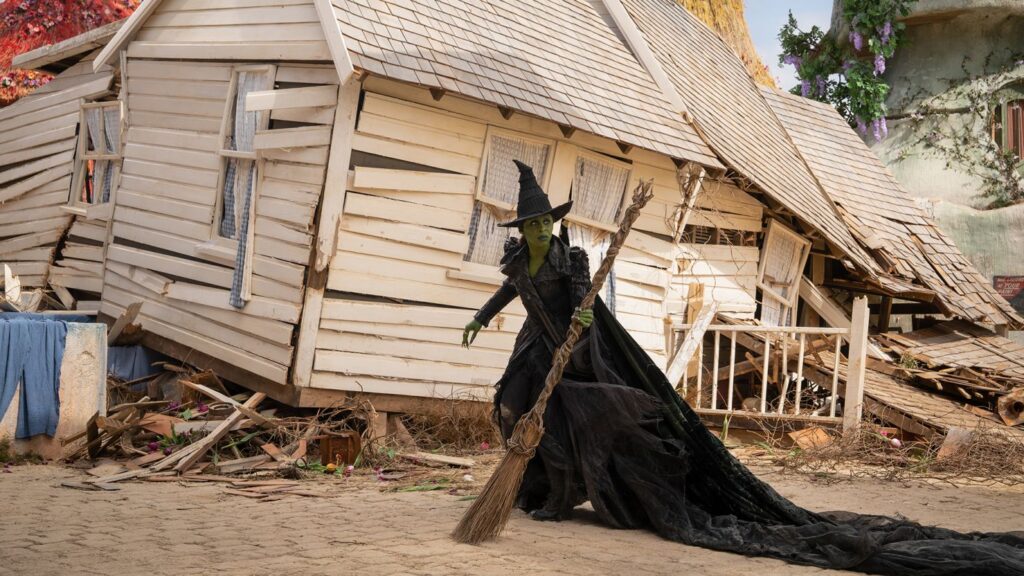In popular culture, the archetypal look of a witch is a female figure generally depicted wearing a black dress, robe, or cloak. Typically, she also sports a pointed hat and carries a broomstick that doubles as her mode of transport. It’s an image that was largely solidified by the 1939 film “The Wizard of Oz,” featuring the Wicked Witch of the West, despite a belief in witches and witchcraft that has long existed in many cultures worldwide for centuries.
As “Wicked: For Good,” the sequel to the modern film adaptation directed by Jon M. Chu, releases in cinemas, eagle-eyed viewers may notice a subtle difference in the witchy protagonist, Elphaba, played by Cynthia Erivo. Devotees, fear not: She still has green skin and an all-encompassing uniform of black. However, for the first time, the character wears trousers. Slim fit and very discrete, they’re worn by Elphaba as she appears in the opening scene, swooping down from the sky to thwart the plight of animals, and throughout the film, as she’s on the run from a mob of angry townspeople on a witch hunt.
“It was a style choice, a thematic one,” according to Paul Tazewell, the costume designer for both “Wicked” (for which he won an Oscar this year) and “Wicked: For Good.”
Speaking from his home in Brooklyn, New York, Tazewell — who worked on the costumes for both films simultaneously — recounts Elphaba’s outfits in the first, from the black pinafore she wears as a little girl when she mourns the death of her mother, to the long, tailored coatdress with puffed sleeves seen on her arrival at Shiz University as a reserved young woman. Her whole life, “she’s othered because of the color of her skin,” said Tazewell. “She’s an oddity within the community.” That kind of prejudice is enough to make any introvert become more reticent. Yet, Elphaba doesn’t — a retaliation that is expressed through her clothes, which she “protects and armors” herself with, he added.
As the first film ends, Elphaba is seen parting ways with Glinda, the benevolent good witch played by Ariana Grande, and the decision to introduce trousers was made as her new environment required her to be more agile. “She’s in exile in the forest, so she only has access to certain things. Her dress is in tatters at this point,” said Tazewell. “We moved away from a dress silhouette to one where she can be active and also give more presence.”
Continue reading the complete article on the original source



